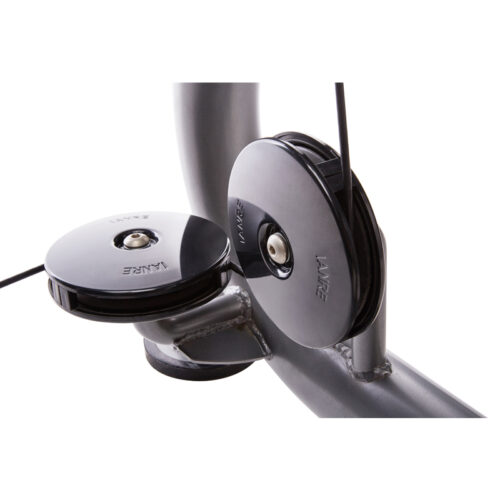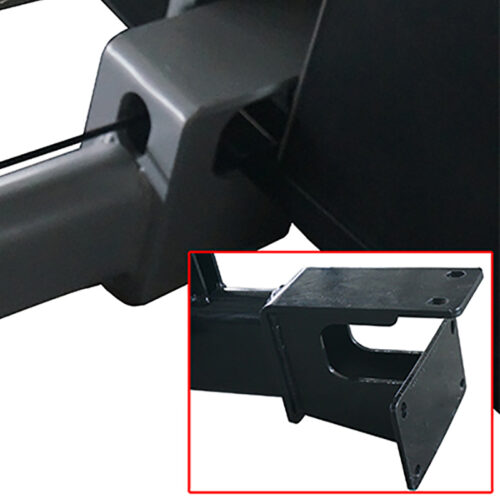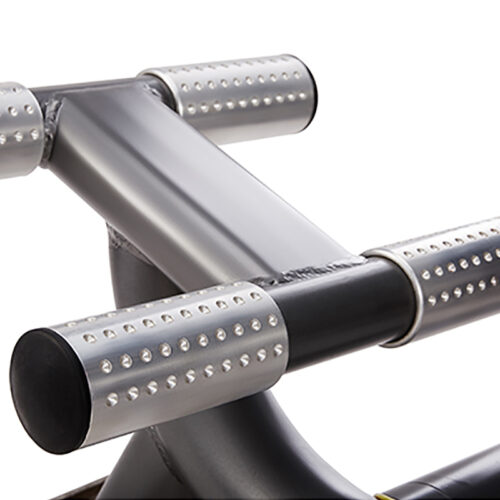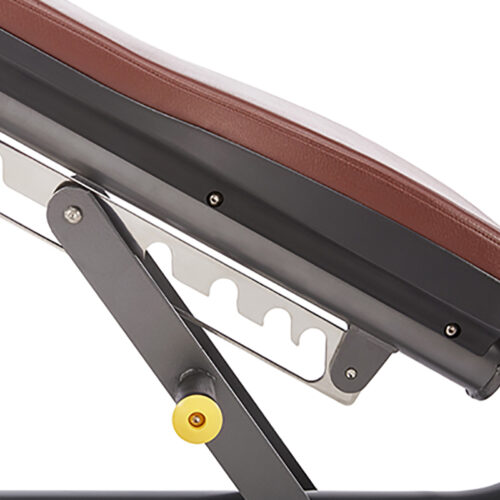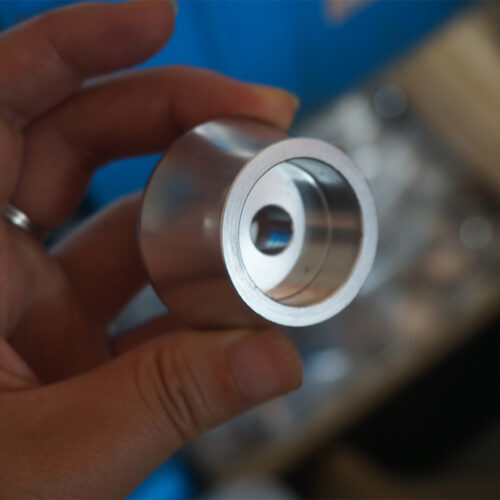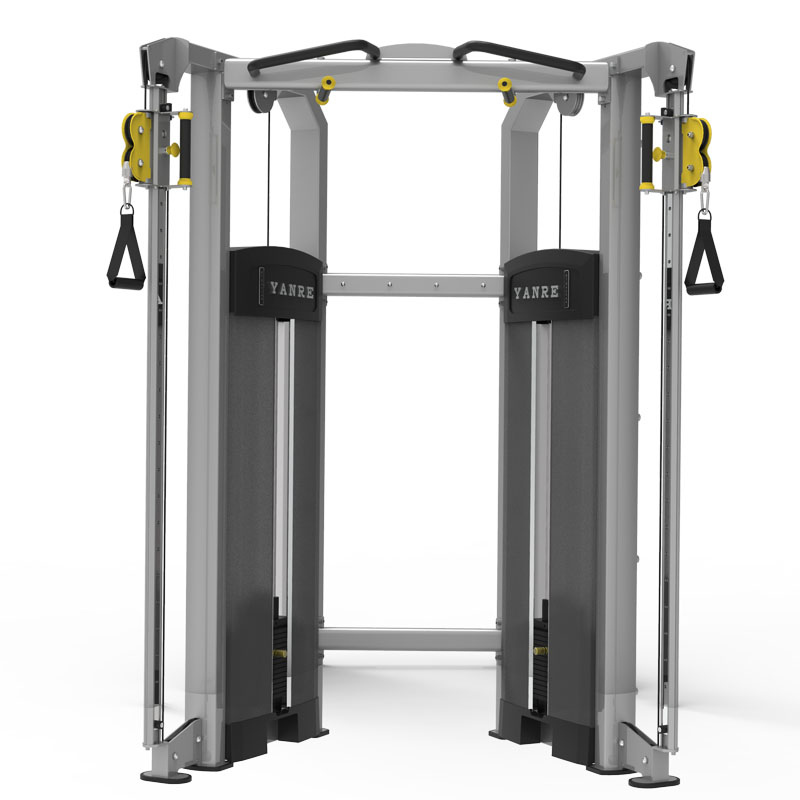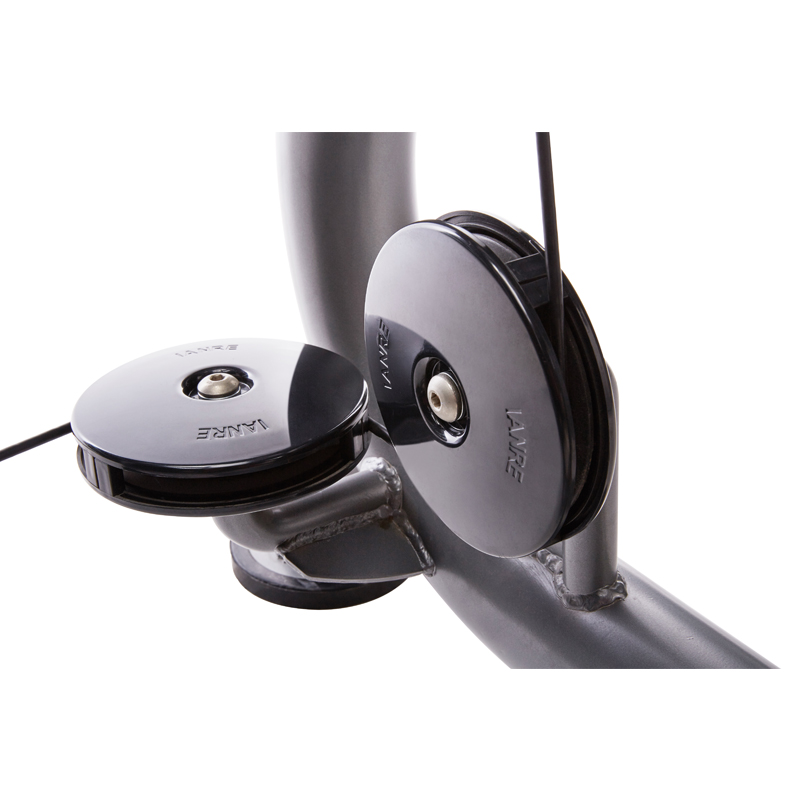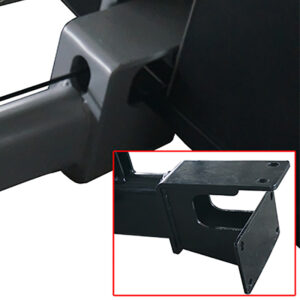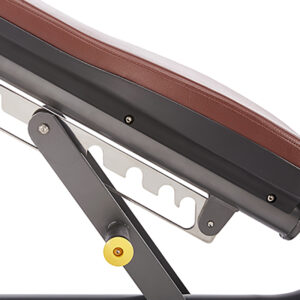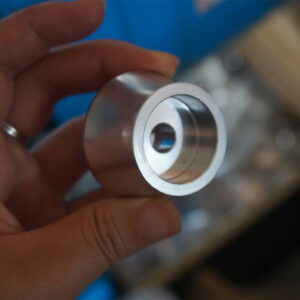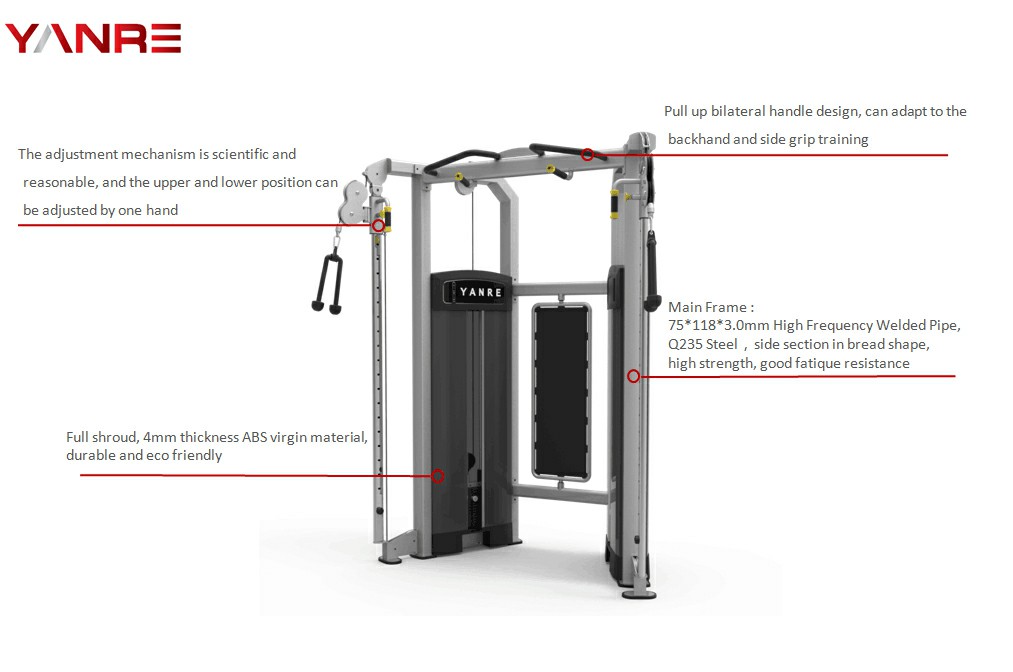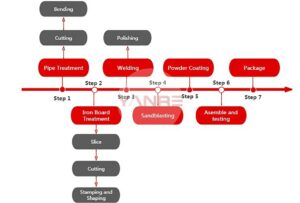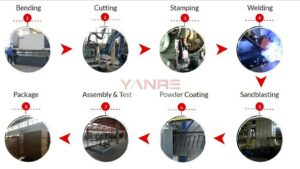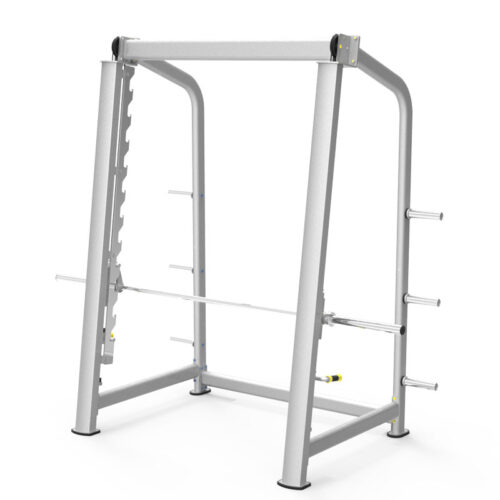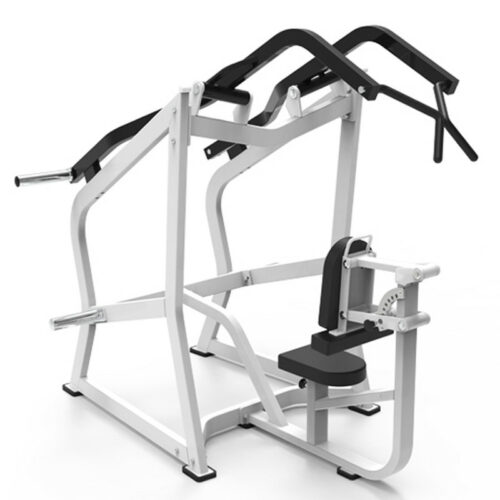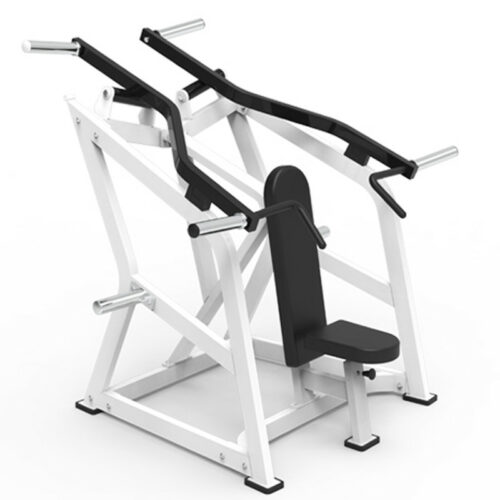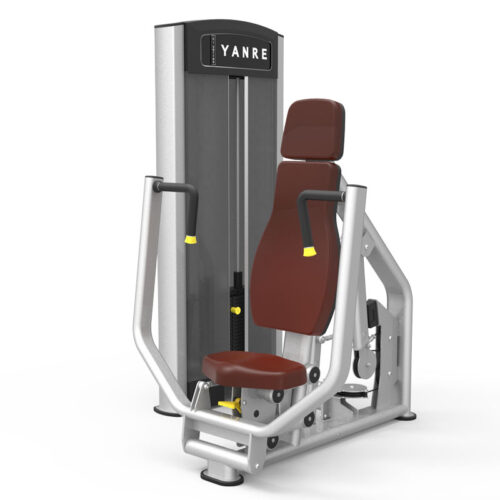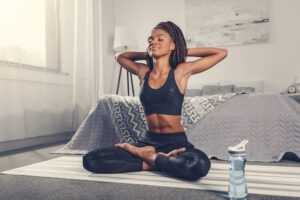Description
Functional Trainer for Sale at Wholesale Price
Are you in search of the commercial functional trainer at an affordable price? Get the best functional trainer cable machine at Yanre Fitness.
With over two decades in manufacturing self-design exercise equipment, Yanre Fitness is proud to be renown across the globe for its finest quality products.
Functional Trainer Basics
What is a functional trainer? Being a cable machine, it has dual unassisted piles of weight, pulleys, and cables (having handgrips) for a wide range of fitness exercises.
The commercial functional trainer is a versatile piece of equipment that can be utilized for your core, upper body, and lower body training. If you have access to a single unit, you can perform at least 36 different exercise movements.
Our multi functional trainer is simple to operate without any major risks. Its frame is made scratch-resistant by powder coating to extend durability even with regular use. This gym functional trainer has two pulleys. The two cable crossovers work in relieving strain on the exerciser during movements. It is suitable for all the fitness levels, from newbies to advanced fitness enthusiasists.
What Is Functional Training?
Functional training exercises can contribute to improving your daily efficiency in simple tasks, heightening your quality of life. You’ll be able to do better in usual day-to-day responsibilities and lead a safer, more productive life.
A range of functions makes up all your movements. This movement is not possible without effort from the muscles. Professional machine explain that the exercise utilizes bands, balls, dumbbells, and plyometric movements to condition your body in unstable surroundings. A large number of fitness experts are of the opinion that carrying out tasks that resemble specific activities or skills is the best way to reach any fitness goal.
A majority of functional training exercises are done while standing. Movements using just one arm or leg will provide a great anti-rotation workout while targeting your core. The way your body gets used to the training depends on what the training asks of your body. Our basic exercises mostly include bodybuilding workouts: combination and isolation exercises with free weights, cables, and machines, to help boost productivity by improving connective tissue health including bone density and muscle mass, and motor unit recruitment.
Where to buy the best commercial functional trainer from China? Yanre Fitness can be your best choice to offer the premium quality functional trainer with attachments/accessories.
Features of the Yanre Functional Trainer
- Adaptability
This cable functional trainer can adapt in a number of ways to suit the preferences of various users in accordance with their chosen workout, the level of training, time, and regularity of exercising.
- Symmetric Loading
The unassisted weight stacks enable both the arms to perform equal work, balancing your effort on both sides.
- Consistent Tension
Smooth, consistent resistance is maintained throughout the exercise as the weight stack follows a linear path upwards then downwards.
- Adjustability
The pulley carriages are adjustable to enable freer motion. Many upper and lower body workouts can be accommodated by manipulating the user-friendly adjustments.
- Cushioning
Anatomically shaped padding with moldable foam offers comfort during use and minimizes damage.
- Frame
Every frame undergoes finishing with an electrostatic powder coat. This enables optimal adhesion and helps increase the life of the unit. Classic protective rubber stumps have been included for stability and reducing slippage.
- A Sleek Addition
The machine can take the overall look of your facility to the next level, thanks to its modern craftsmanship.
Fuctional Trainer Specs
- Adjustable pad height accommodate all users, and contoured non-slip foot plates allow users’ ankles to move in a full range-of-motion.
- Main frame adopts 75*118*3.0 semi elliptical pipe, functional area adopts 50*120*3.0 flat oval pipe, movement arm adopts 40*80*3.0mm, joint pipe is 50*100*3.0 flat oval pipe. All pipes are Q235 qualified.
- High density foam upholstery, “furniture grade” PU leather , and integral ABS guard cover.
- Cable inside the pipe, makes the machine organized.
- Full shroud, 4mm thickness ABS virgin material, durable and eco friendly.
- Japan made wire cable, with 6*19+1*75 coated wire which can withstand 1400kg strength.
- N.W.:355kgs/783lbs
- G.W.:365kgs/805lbs
- Installation size:1792*1074*2283mm/ 71*42*90in
- Weight stacks:70kg-14pcs/154lbs-14pcs
Common Mistakes to Avoid with a Functional Trainer
- Avoid dropping the weight into the stack between reps. You should have full control of the cable throughout each set, keeping the weight suspended to maintain tension in your muscles.
- Avoid performing the same repetitive exercises. A functional trainer opens up so many possibilities, so look up variations of your everyday exercises and include new movements in your routine to make the most of it.
- Avoid arching or hunching your back, keeping your spine straight at all times.
- Avoid setting the weight stack too heavy for any exercise. Generally, you should be able to perform at least 7 to 8 reps with your selected weight.
Spare No Muscle – Full-Body Functional Trainer Workout
Our functional trainer can be your go-to piece of equipment for full-body strength training, allowing plenty of different movements in any direction you wish. You can engage major muscle groups along with stabilizing muscles for any body part. While there’s no limit to functional trainer exercises, below are some of our favorite moves that can collectively target your whole body.
- Chest Press
Muscles Worked: Pectorals, deltoids, triceps
Recommended Reps: 3 sets x 8 reps
Perhaps one of the most common exercises people perform on a functional trainer is the chest press. It’s a significant movement for upper body training, primarily working your chest and secondarily working your shoulders and arms. It also strengthens the core muscles to improve stability and balance.
You can either perform standing chest presses or use a bench for seated ones. Adjusting the cable height to approximately chest level, you can vary it somewhat to target different areas of your chest. Draw in your elbows and bring them close to your sides to best work your triceps, or keep your elbows flared out to keep the focus on your pecs.
- Triceps Extension
Muscles Worked: Triceps, obliques
Recommended Reps: 3 sets x 8 reps
This is a great move for both beginners and advanced users who need that extra pump in their arms. Being an isolation exercise for the triceps, it can develop bigger and sleeker arms over time, reducing any flabby appearance. Triceps extension exercises also use the obliques as stabilizer muscles.
- Bicep Curl
Muscles Worked: Biceps
Recommended Reps: 3 sets x 12 reps
The bicep curl and its several variations are popularly performed on the functional trainer. This pulling exercise is suitable for both beginners and advanced users. You can perform either the standard standing bicep curls or its modifications such as overhead curls, single-arm concentration curls, seated curls, and more.
- Kneeling Cable Crunch
Muscles Worked: Abdominals
Recommended Reps: 4 sets x 8 reps
Need to target those six-pack muscles for strength and definition? Cable crunches on a functional trainer can be perfect for this purpose! Set the pulley height at chest level and kneel in front of the machine. Holding the rope attachment behind your neck, bend forwards towards the floor, pulling the cable along. Keep your core engaged, and go back to your starting position. This isn’t an exercise for large weights or speedy movements – go light at first, and opt for a weight that helps you stay in control throughout your set.
- Bridge Curl
Muscles Worked: Core and biceps
Recommended Reps: 2 sets x 8 reps
Place the pulleys at the lowest setting, and lie down while facing the machine with your legs bent at the knees. Grasping one handle in each hand, curl your fists towards your shoulders as you raise your hips from the ground. Slowly return to your starting position while maintaining control of the cable throughout the movement.
- Plank Triceps Kick Back
Muscles Worked: Core, triceps
Recommended Reps: 3 sets x 12 reps
The plank triceps kickback is a compound exercise if you really need to get your core firing. Set the pulley at its lowest height and use the D-handle attachment for this exercise. Face the machine in plank position, and hold a handle in one hand. Pull it back towards your hips while straightening your arm to extend your triceps. Complete the reps on one side before switching to the other, and feel the burn in your triceps.
- Single Arm Row
Muscles Worked: Lats, shoulders
Recommended Reps: 3 sets x 8 reps
A reverse pulling movement to the cable chest press, the single-arm row activates your shoulders and lats while independently targeting each limb too. Set the cable pulley at shoulder-level and grasp the D-handle attachment with one hand. Step backward until you’re at an arm’s distance from the equipment, then keep your core engaged as you pull the handle towards your body. Slowly return it to the machine and bring it back again, completing the reps in one arm before switching to the other.
- Cable Step Up
Muscles Worked: Hamstrings, glutes
Recommended Reps: 3 sets x 12 reps
This is a great lower-body exercise to try with a functional trainer. Bring a step or box in front of the equipment and adjust the pulley to its lowest setting. With your back facing the machine, step up on the box after grasping the rope attachment over your shoulder. Keep your core engaged as you step back down, then switch legs for the other rep. Keep switching legs for the full set to train your body for balance, strength, and stability, all at once.
- Standing Leg Curl
Muscles Worked: Hamstrings
Recommended Reps: 3 sets x 10 reps
Adding an ankle attachment opens up even more exercise possibilities on the functional trainer. One such movement is the standing leg curl, performed by setting the pulley on its lowest height and fastening the ankle strap to your leg.
Face the equipment, and extend one leg straight backward. While keeping your core tight, bring it back to the starting position. Complete all reps on one side before switching to the other.
- Cable Reverse Lunge
Muscles Worked: Hamstrings, posterior muscle chain
Recommended Reps: 3 sets x 10 reps
Forget the classic lunge movement – why not do it backward to challenge your balancing ability and strength at the same time? Set the cable pulley on the lowest height, then get into the lunge position, bending a single knee at 90 degrees. Holding the rope attachment over one shoulder, extend your legs to rise into a standing position. Go back into the lunge and repeat to get your hamstrings firing.
That’s not all! The functional trainer offers hundreds of exercise movements that can tone, strengthen, and define your musculature.
Eat, Train, Repeat
Nothing is impossible when you have a heavy-duty functional trainer at your disposal. Its accommodating nature will spare no muscle!
Quick Judgement Tips
#Originality:
1. Check whether there is an R&D center to design its own strength equipment; talk with the designers about design concepts.
#Movement Angle:
2. Ask designers at the R&D center if they usually work out with gym equipment. Designers who do not work out with gym equipment should never design any strength training machine.
3. You should try the fitness equipment yourself. You need to experience the following three aspects:
- Whether it is smooth to use.
- Whether specific equipment is activating your targeted muscle group.
- For converging and diverging equipment, whether there is a peak contraction experience.
#Finish:
4. Know about the specific treatment methods applied to the surface.
5. Check if the surface is smooth to the touch.
6. Take a hard metal object, such as a key, and scratch the surface of the equipment in order to see the adhesion of the surface coating.
#Frame Pipe:
7. Pipe standard: ask the supplier about the standard of this pipe. In China, for example, you should expect fitness equipment pipes to meet Q235 standard.
8. Pipe Size: Look for 40mm x 80mm and above for the length and width of the frame pipe, preferably with 3.0mm in thickness.
9. Treatment: bending production procedure is preferred over cutting and welding.
10. Check the thickness of the raw material, not the the painted tube.
#Connections:
11. Ask the factory representative about the treatment methods, as well as the theoretical basis of the connection.
12. Check the thickness of the connecting plate and the strength of the screw.
#Seat
-Seat Fillings:
13. Press the seat firmly with your thumb or apply a specific instrument to measure its density level.
-Seat Leather:
14. Smell: Check whether there is any pungent smell.
15. Tactile impression: Touch the surface by hand and confirm the tactile impression.
16. Density: Observe from the cut/side surface and check its stomata; the more stomata there is, the lower the density and quality.
17. Thickness: Check the thickness of the material; the thicker, the better;
-Seat Support Plate
18. Check the material used. Generally speaking, ABS is better than iron board and plywood.
19. Check the appropriateness of the match between fillings and support plate.
-Seat Adjuster
20. Adjust the seat several times to check whether it is easy to use. After adjusting the seat, sit on it and shake to test its stability.
#Components
-Pulley
21. Material: Determine the material used and assess whether it is appropriate based on our comparison chart.
22. Stability: Make the pulley rotate and observe whether it wobbles.
-CAM:
23. Determine the material applied and assess whether it is suitable according to the comparison chart.
24. Check whether the pulley and CAM are smooth when used.
25. Use the machine and confirm whether its design is in line with the principle of movement.
-Cable:
26. Check the thickness of the cable; the thicker it is, the more solid the cable will be.
27. If you buy for commercial use, never be cheated by manufacturers who apply home use material to industrial equipment.
28. Ask about the maximum load capacity along with fatigue test report and check the results.
#Safety:
29. Meet the standard ISO20957: Check whether there is a certificate of ISO20957, which means the equipment has passed the International Organization for Standardization.
30. Stability: Try to push a pin-loaded machine to check if it is stable. On machines like the Lat Pulldown, select the maximum weight, then suddenly loosen the handle to see if the device is still stable.
31. Total net weight: subtract the weight plates; the heavier, the safer.
32. Overall structure: the surface of the fitness equipment pipe should be free of any protrusions so as to avoid injury.
33. The edges and corners of the surface should have a radius r ≥ 2.5mm. They should also be free of burrs and make use of round corners.
34. tube ends: All the tube ends should be in the accessible hand, and the foot area should be closed off.
35. You should be able to stop the motion at any time.
36. The weight selection pin should be fitted with a holding system to prevent accidental change or movement during exercise.
Manufacturing Process
Similar Products:
Related Article:
Best Commercial Gym Equipment Buying Guide In 2020
Learn more buying tips: Best Commercial Gym Equipment Buying Guide
https://www.youtube.com/watch?v=2Km8QE7mBXk


